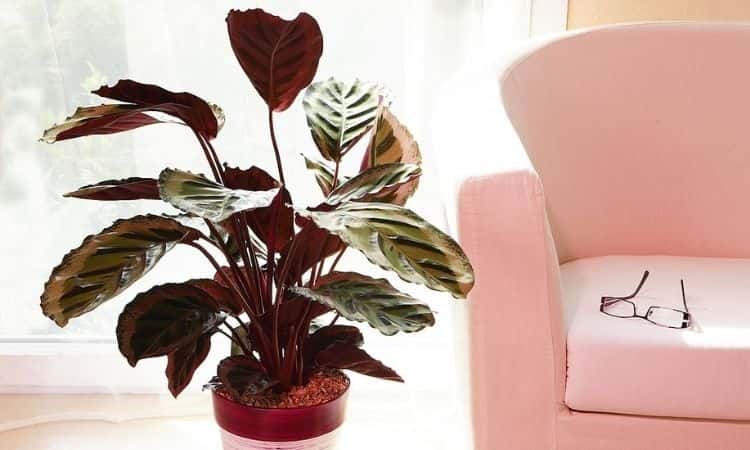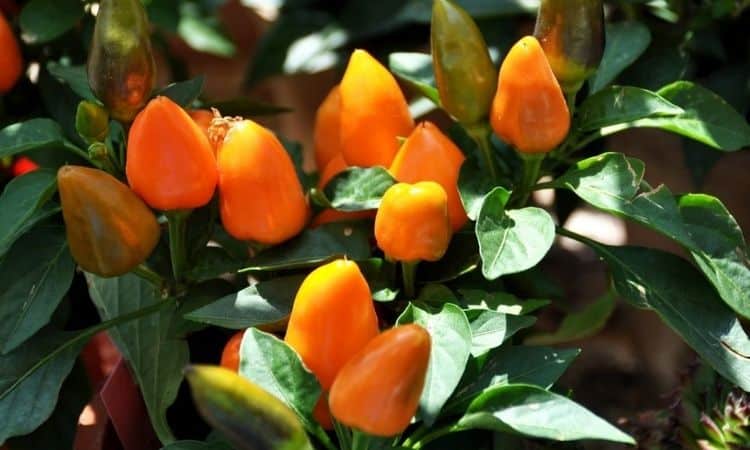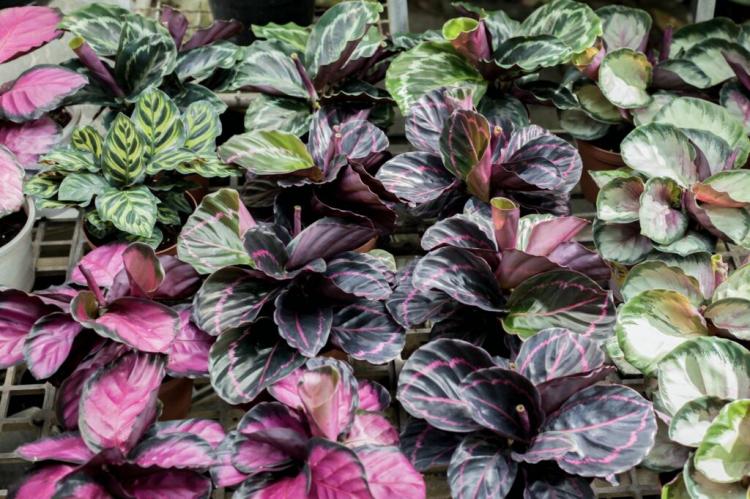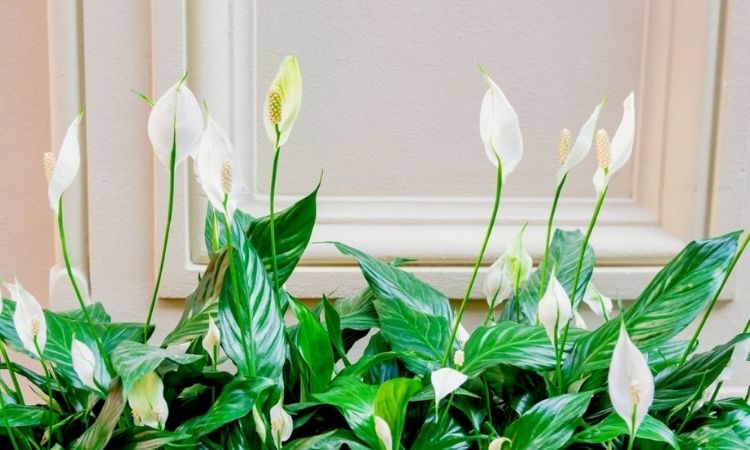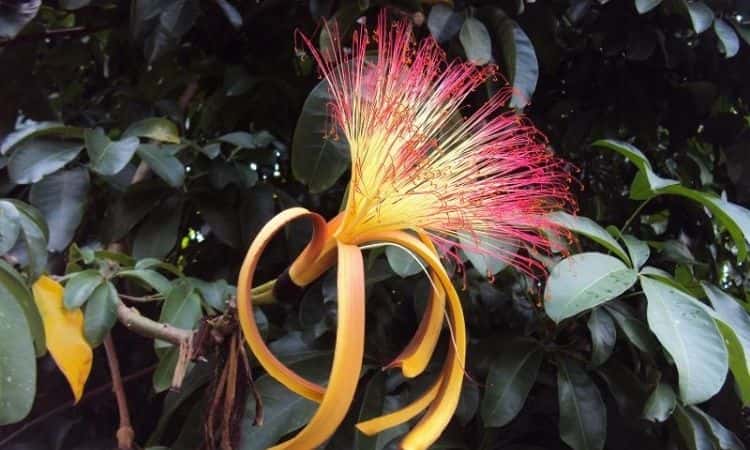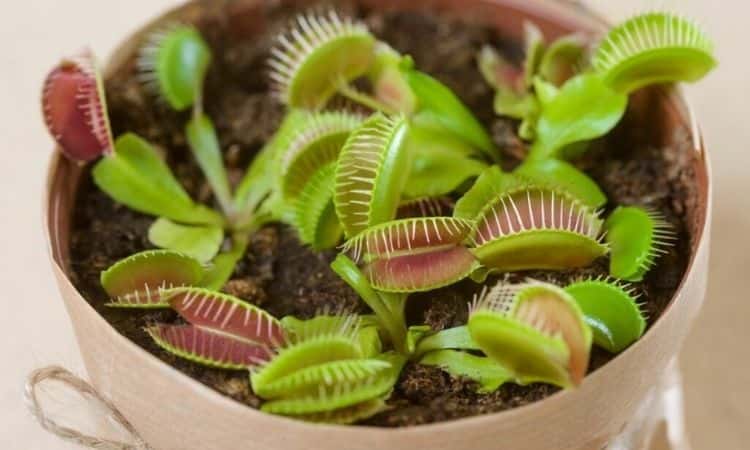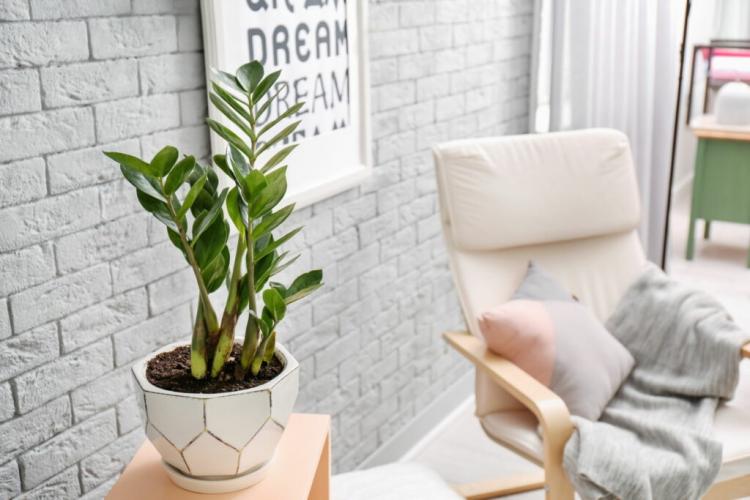Calathea: Profile, Plants And Care Tips
A special houseplant is the Calathea, which originates from the humid Neotropis and is often called Calathea. How to plant and care for it, you can read here.
Especially through its striking leaves, the plant captivates and becomes an eye-catcher for every living room. Read with us, who the tropical beauty is, how she also feels comfortable in our latitudes, and how to care for her properly.
Calatheas: Origin and characteristics
Table of Contents
One of the most beautiful green plants you can have in your house is the Calathea. This exotic plant belongs to the arrowroot family (Marantaceae) and originates from the tropical parts of America, especially the humid Neotropics. It can be cultivated here as a houseplant – also in combination with other tropical plants.
The conspicuous leaves of this perennial herbaceous plant usually adorn unusual patterns when young. The contrast between the juicy green leaves and the often white shades is typical. With increasing age, the patterns fade and the leaves become uniformly green. The underside of the leaves is purple in some varieties. The shape of the leaves varies depending on the variety and species. The foliage can be elongated, pointed, ovate, or roundish.
Calathea differs in size depending on the species: for example, Calatheas orbifolia grows up to 100 cm high, while Calathea lancifolia ‘Insigne’ grows only about 60 cm. Calatheas species stop their growth as soon as their individual height is reached.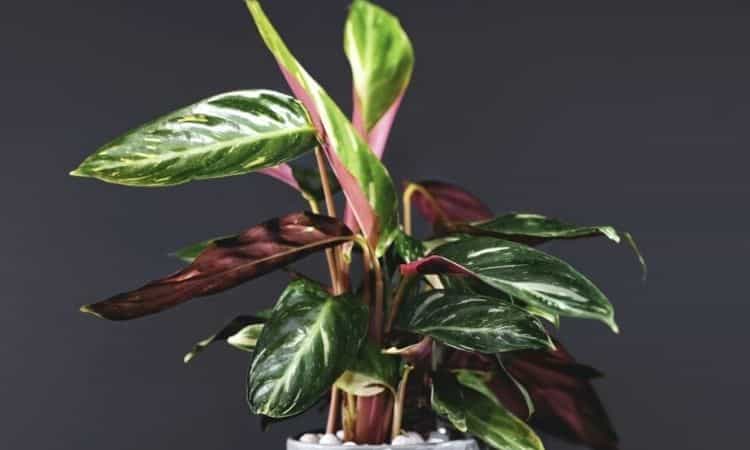
Another special feature of the plant is that its leaves curl up or stand up at night and unfold again in the morning at the beginning of the day. It thus adapts to light conditions and regulates photosynthesis.
The flowers only very rarely when kept as an indoor plant. This is mainly due to the sub-optimal climatic conditions. In its tropical homeland, it develops yellow flower ears in January or February.
Plant Calathea: The right location
The Calathea is a plant that is very sensitive to the location and its environmental conditions. It is therefore important to orientate oneself to its natural habitat in the tropics.
The Calathea grows above all on the shady ground of the tropical forests and therefore prefers light, half-shady locations in the house. Direct sunlight should be avoided, as too much sun can cause damage to the leaves, which look like “burns”.
High air humidity as in the tropics is necessary for healthy growth, otherwise brown necroses, i.e. dying tissue on leaf edges or tips, can occur. Cold drafts should also be avoided. The ideal temperature is 20 to 24 °C during vegetation in summer and about 18 °C in winter. Temperatures below 15 °C should be avoided, as the Calathea is sensitive to low temperatures.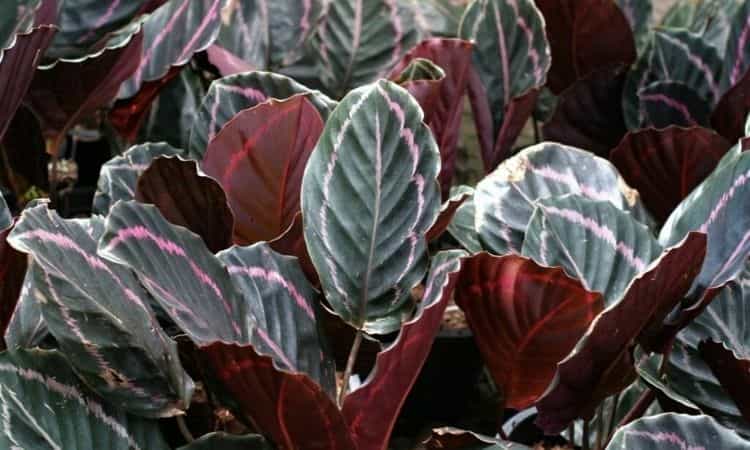
Which soil is suitable for the Calathea?
For the Calathea, a high-quality, loose green plant soil can be used. Also, approximately 30% of expanded clay can be added to the soil to make it permanently looser. Since the plant is extremely sensitive to excessively wet soil, the soil should be well-drained. A layer of expanded clay at the bottom of the pot is ideal for this purpose – excess water can then simply runoff.
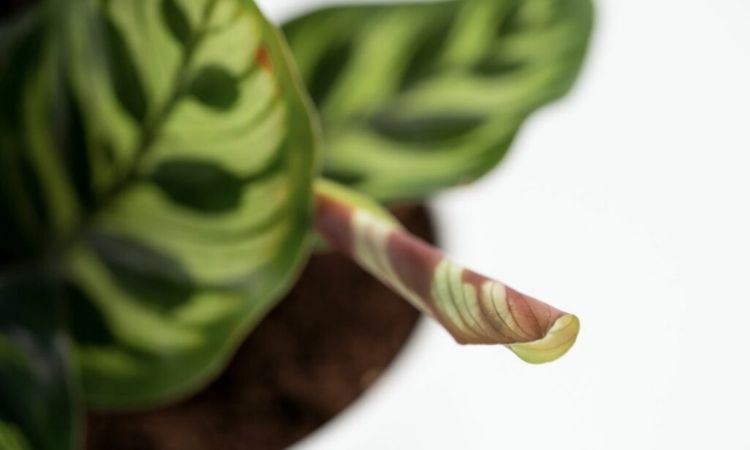
Planting Calathea: Step By Step
Since the Calathea forms flat roots, a flat, wide pot is more suitable than a tall one. This has the additional positive effect that more water evaporates from the soil due to the larger pot surface and the air humidity in the direct vicinity of the plant is slightly increased. As an original tropical plant, the Calathea particularly appreciates this.
When choosing a pot, it is important to use a pot with large holes to allow good water drainage. Then the Calathea can be placed in the pot and covered with soil. However, the plant should not be covered with more soil than it was used to in the previous pot. After pressing on the soil, it is important to water the plant well.
Care
Because of its tropical origin, the Calathea is a demanding plant in our country. However, if the environmental conditions are adapted to its needs, it grows up healthy and strong. To care for the Calathea, it is also necessary to wipe the leaves regularly with a damp cloth to remove dust. Care should be taken, however, because the leaves will not recover from injuries caused by bending.
Watering
An even supply of water to the Calathea is crucial for their healthy growth – for this purpose, they should be watered once or twice a week from April to October. At the latest when the leaves become limp or curl up during the day, this is an indicator that water is lacking. During hibernation from November to March, watering should be reduced to prevent root rot due to excessive moisture.
Water low in lime, such as rainwater or mineral water, is best suited. The usually very calcareous tap water could influence the pH value of the soil. Besides supplying the roots with water, it is also important for the Calathea to spray the leaves regularly. This corresponds more to the climate of their tropical origin and prevents the tips of the leaves from drying out.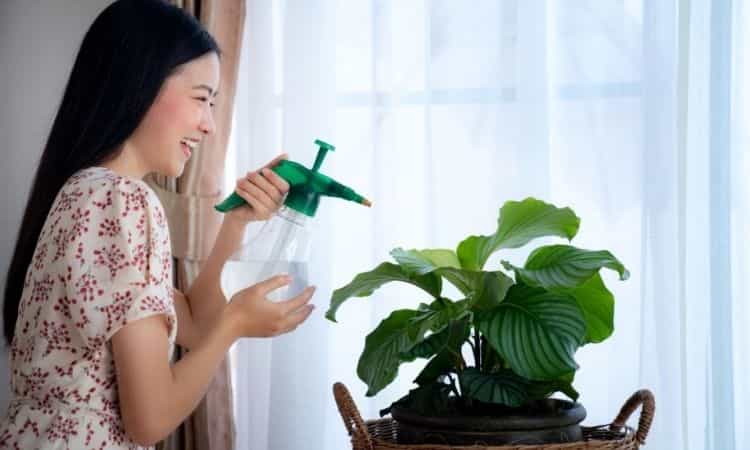
Fertilizing Calathea properly
The nutrient requirement of the Calathea is low compared to other green plants. It is sufficient to fertilize the plant every three to four weeks during the growing season with liquid fertilizer and in this way replenish the nutrient supply of the soil.
Above all, an application via the irrigation water offers the advantage that the nutrients are quickly transferred into the soil solution and thus reach all parts of the plant very soon to be able to supply them. Do not fertilize the plant during the winter rest period from November to March.
Cut
When cutting the Calathea, it is sufficient to regularly cut off old, dry, or diseased leaves. The plant can also be checked for pest infestation at the same time. A further cut is not necessary.
Common care mistakes with the Calathea
- Watering too much: the soil is too wet; can lead to root rot and fungal attack, which often shows itself in withered leaves.
- Water too little: Leaves begin to curl up (Warning, the danger of confusion: Calathea puts up its leaves at night or curls them up – this is normal and does not indicate a lack of water), can lead to drying of the plant.
- Wrong location: plant gets too little light; the pattern of the leaves fades, the plant grows only a little.
- Wrong location: The plant is in direct sunlight; brown leaf damage (“burns”) occurs.
- Wrong location: too cold; plant hardly grows, no new leaves are formed, yellowing of leaves occurs.
- Humidity too low: plant develops brown leaf tips and edges.

Report Calathea
After two years at the latest, the Calathea should be repotted, because the old pot becomes too small. The best time for this is spring before the vegetation period starts again. The new pot should not be too big, otherwise, the unrooted soil will become too wet and rot may occur.
When the plant has been removed from the old pot and the old soil has been carefully tapped, the roots should be checked for brown and rotten spots. These should be cut out immediately if necessary to prevent further spreading.
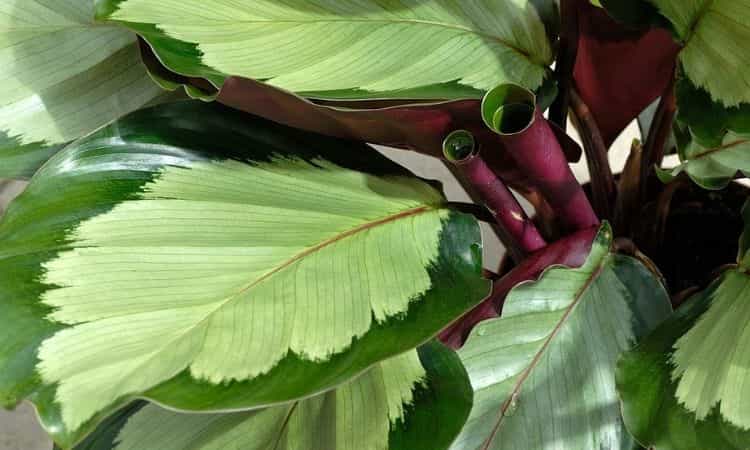
Hibernation of the Calathea
The Calathea can be hibernated without problems. Bright, cool rooms are suitable for this purpose, which are not heated much in winter but do not cool down either. For example, the work or guest room or a bright staircase are suitable. The ideal temperature is around 18 °C, but should not fall below 15 °C.
During the hibernation period, the Calatheas plant should continue to be watered little, the root ball should not dry out. The finger test helps to check the humidity. Fertilization is not necessary for winter. At the beginning of vegetation in April you can bring them Calatheas back to its old location.
Propagate
The Calathea can be propagated by division of the mother plant. The best time for this also springs when the plants are repotted. To obtain cuttings, you should pot the mother plants and remove the old soil. The tuberous roots should then be divided so that two to seven leaves are combined to form a new plant. All new plants must have enough roots to grow again.
Then the plant pots can be filled with soil and the Calatheas can be lightly pressed on. Here again, green plant-soil is suitable for creating ideal growing conditions for the young plants. Finally, the plants should be well watered and brought into a bright, warm room. This promotes root development.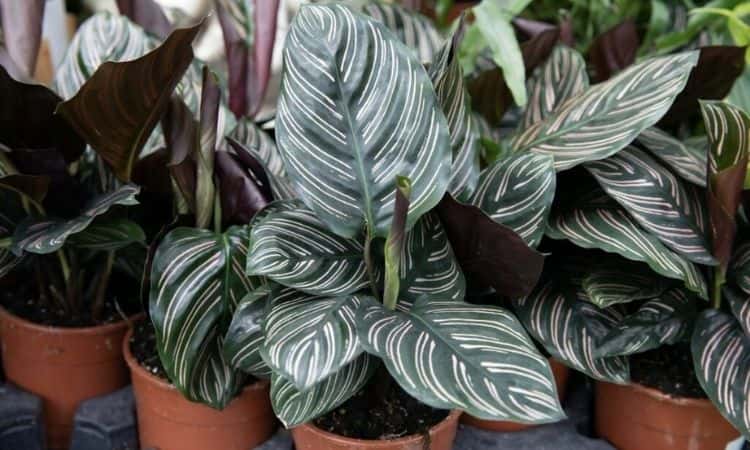
Growing from seeds is also possible with the Calathea, but more complex. A small pot should be filled with soil. Then the plant seeds can be placed on the substrate and covered with soil about 2 mm thick. Generous watering creates a moist germination climate.
To create a humid-warm environment, the pot can finally be placed in a mini-greenhouse, a pressure-lock bag, or something similar and placed in a warm place – for example on the windowsill. Occasional airing of the greenhouse prevents mold growth.
Is the Calathea plant poisonous?
The Calathea is not poisonous. The leaves are used in large parts of Brazil and Colombia to transport food. The leaf stalks can be used to weave the plant from them – this is also the origin of the Calatheas parent’s name. In pets, eating the leaves can cause vomiting, but fortunately, no other dangers are known.
Common diseases and pests
If the location of the Calathea plant is too dry, it can lead to an infestation with spider mites (Tetranychidae). However, this can be prevented by regularly spraying the plants with water, as the spider mites do not like high humidity. Besides spider mites, scale insects (Coccoidae) can also damage the plant.
The undersides of the leaves should be checked regularly, as this is where they like to hide. In their tropical home, caterpillars of the banana butterfly (Caligo eurilochus) can also become a problem, but not in our latitudes.
In addition to pests, it is also possible that the Calathea is attacked by fungal diseases. These spread above all when the root ball was too wet for too long. Stagnant moisture can also lead to root rot, which weakens and damages the plant. Both can be prevented by good drainage and well-controlled watering.
